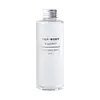What's inside
What's inside
 Key Ingredients
Key Ingredients

 Benefits
Benefits

 Concerns
Concerns

No concerns
 Ingredients Side-by-side
Ingredients Side-by-side

Water
Skin ConditioningDipropylene Glycol
HumectantGlycerin
HumectantPEG-32
HumectantDiglycerin
HumectantGlycosyl Trehalose
Emulsion StabilisingHydrogenated Starch Hydrolysate
HumectantPhenoxyethanol
PreservativeButylene Glycol
HumectantSodium PCA
HumectantAllantoin
Skin ConditioningSodium Citrate
BufferingPolyquaternium-51
Skin ConditioningCitric Acid
BufferingSodium Hyaluronate
HumectantPortulaca Oleracea Extract
Skin ConditioningCitrus Grandis
Water
Skin ConditioningGlycerin
HumectantDipropylene Glycol
HumectantPentylene Glycol
Skin ConditioningUrea
BufferingCeramide Ng
Skin ConditioningSodium Hyaluronate
HumectantSodium Acetylated Hyaluronate
HumectantHydrolyzed Hyaluronic Acid
HumectantHydroxyethyl Urea
HumectantCirsium Flower/Leaf/Stem Extract
Skin ConditioningAnthemis Nobilis Flower Extract
MaskingErica Cinerea Flower Extract
Skin ConditioningCalendula Officinalis Flower Extract
MaskingCentaurea Cyanus Flower Extract
AstringentPyrus Malus Fruit Extract
Skin ConditioningPrunus Persica Leaf Extract
EmollientPimpinella Anisum Fruit Water
Skin ConditioningDipotassium Glycyrrhizate
HumectantSodium Citrate
BufferingLactic Acid
BufferingButylene Glycol
HumectantPPG-4-Ceteth-20
EmulsifyingAlcohol Denat.
AntimicrobialPhenoxyethanol
PreservativeWater, Glycerin, Dipropylene Glycol, Pentylene Glycol, Urea, Ceramide Ng, Sodium Hyaluronate, Sodium Acetylated Hyaluronate, Hydrolyzed Hyaluronic Acid, Hydroxyethyl Urea, Cirsium Flower/Leaf/Stem Extract, Anthemis Nobilis Flower Extract, Erica Cinerea Flower Extract, Calendula Officinalis Flower Extract, Centaurea Cyanus Flower Extract, Pyrus Malus Fruit Extract, Prunus Persica Leaf Extract, Pimpinella Anisum Fruit Water, Dipotassium Glycyrrhizate, Sodium Citrate, Lactic Acid, Butylene Glycol, PPG-4-Ceteth-20, Alcohol Denat., Phenoxyethanol
Ingredients Explained
These ingredients are found in both products.
Ingredients higher up in an ingredient list are typically present in a larger amount.
Butylene Glycol (or BG) is used within cosmetic products for a few different reasons:
Overall, Butylene Glycol is a safe and well-rounded ingredient that works well with other ingredients.
Though this ingredient works well with most skin types, some people with sensitive skin may experience a reaction such as allergic rashes, closed comedones, or itchiness.
Learn more about Butylene GlycolDipropylene Glycol is a synthetically created humectant, stabilizer, and solvent.
This ingredient helps:
Dipropylene glycol is technically an alcohol, but it belongs to the glycol family (often considered part of the ‘good’ alcohols). This means it is hydrating and gentle on skin unlike drying solvent alcohols like denatured alcohol.
As a masking agent, Dipropylene Glycol can be used to cover the smell of other ingredients. However, it does not have a scent.
Studies show Dipropylene Glycol is considered safe to use in skincare.
Learn more about Dipropylene GlycolGlycerin is already naturally found in your skin. It helps moisturize and protect your skin.
A study from 2016 found glycerin to be more effective as a humectant than AHAs and hyaluronic acid.
As a humectant, it helps the skin stay hydrated by pulling moisture to your skin. The low molecular weight of glycerin allows it to pull moisture into the deeper layers of your skin.
Hydrated skin improves your skin barrier; Your skin barrier helps protect against irritants and bacteria.
Glycerin has also been found to have antimicrobial and antiviral properties. Due to these properties, glycerin is often used in wound and burn treatments.
In cosmetics, glycerin is usually derived from plants such as soybean or palm. However, it can also be sourced from animals, such as tallow or animal fat.
This ingredient is organic, colorless, odorless, and non-toxic.
Glycerin is the name for this ingredient in American English. British English uses Glycerol/Glycerine.
Learn more about GlycerinPhenoxyethanol is a preservative that has germicide, antimicrobial, and aromatic properties. Studies show that phenoxyethanol can prevent microbial growth. By itself, it has a scent that is similar to that of a rose.
It's often used in formulations along with Caprylyl Glycol to preserve the shelf life of products.
Sodium Citrate is the sodium salts of citric acid. In skincare, it is used to alter pH levels and acts as a preservative.
Its main functions are to maintain the pH of a product and neutralize metal ions.
The acidity of our skin is maintained by our glands and skin biome; normal pH level of skin is slightly acidic (~4.75-5.5).
Being slightly acidic allows our skin to create an "acid mantle". This acid mantle is a thin barrier that protects our skin from bacteria and contaminants.
Learn more about Sodium CitrateSodium Hyaluronate is hyaluronic acid's salt form. It is commonly derived from the sodium salt of hyaluronic acid.
Like hyaluronic acid, it is great at holding water and acts as a humectant. This makes it a great skin hydrating ingredient.
Sodium Hyaluronate is naturally occurring in our bodies and is mostly found in eye fluid and joints.
These are some other common types of Hyaluronic Acid:
Learn more about Sodium HyaluronateWater. It's the most common cosmetic ingredient of all. You'll usually see it at the top of ingredient lists, meaning that it makes up the largest part of the product.
So why is it so popular? Water most often acts as a solvent - this means that it helps dissolve other ingredients into the formulation.
You'll also recognize water as that liquid we all need to stay alive. If you see this, drink a glass of water. Stay hydrated!
Learn more about Water